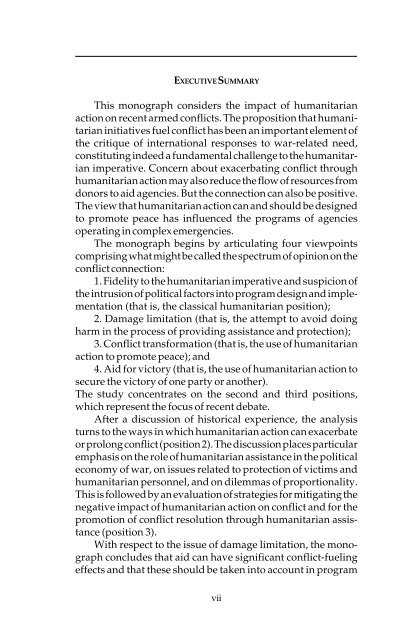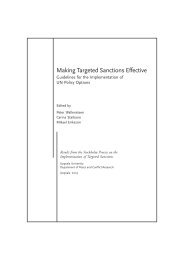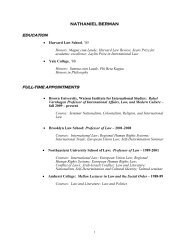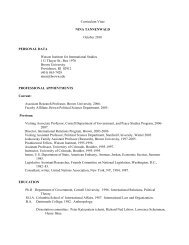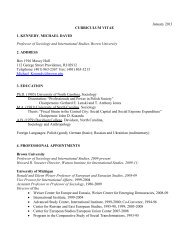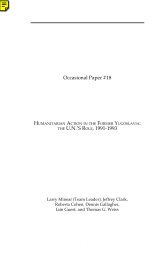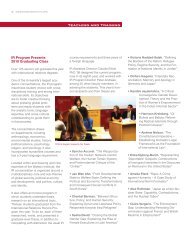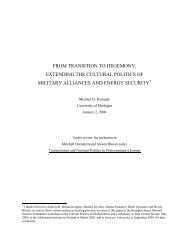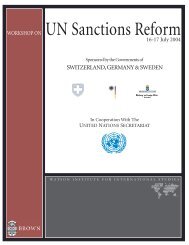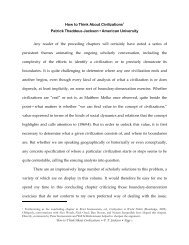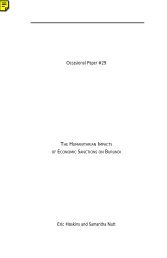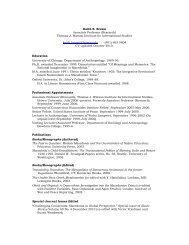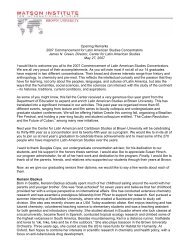Brown Cover OP 43 - The Watson Institute for International Studies
Brown Cover OP 43 - The Watson Institute for International Studies
Brown Cover OP 43 - The Watson Institute for International Studies
You also want an ePaper? Increase the reach of your titles
YUMPU automatically turns print PDFs into web optimized ePapers that Google loves.
EXECUTIVE SUMMARY<br />
This monograph considers the impact of humanitarian<br />
action on recent armed conflicts. <strong>The</strong> proposition that humanitarian<br />
initiatives fuel conflict has been an important element of<br />
the critique of international responses to war-related need,<br />
constituting indeed a fundamental challenge to the humanitarian<br />
imperative. Concern about exacerbating conflict through<br />
humanitarian action may also reduce the flow of resources from<br />
donors to aid agencies. But the connection can also be positive.<br />
<strong>The</strong> view that humanitarian action can and should be designed<br />
to promote peace has influenced the programs of agencies<br />
operating in complex emergencies.<br />
<strong>The</strong> monograph begins by articulating four viewpoints<br />
comprising what might be called the spectrum of opinion on the<br />
conflict connection:<br />
1. Fidelity to the humanitarian imperative and suspicion of<br />
the intrusion of political factors into program design and implementation<br />
(that is, the classical humanitarian position);<br />
2. Damage limitation (that is, the attempt to avoid doing<br />
harm in the process of providing assistance and protection);<br />
3. Conflict trans<strong>for</strong>mation (that is, the use of humanitarian<br />
action to promote peace); and<br />
4. Aid <strong>for</strong> victory (that is, the use of humanitarian action to<br />
secure the victory of one party or another).<br />
<strong>The</strong> study concentrates on the second and third positions,<br />
which represent the focus of recent debate.<br />
After a discussion of historical experience, the analysis<br />
turns to the ways in which humanitarian action can exacerbate<br />
or prolong conflict (position 2). <strong>The</strong> discussion places particular<br />
emphasis on the role of humanitarian assistance in the political<br />
economy of war, on issues related to protection of victims and<br />
humanitarian personnel, and on dilemmas of proportionality.<br />
This is followed by an evaluation of strategies <strong>for</strong> mitigating the<br />
negative impact of humanitarian action on conflict and <strong>for</strong> the<br />
promotion of conflict resolution through humanitarian assistance<br />
(position 3).<br />
With respect to the issue of damage limitation, the monograph<br />
concludes that aid can have significant conflict-fueling<br />
effects and that these should be taken into account in program<br />
vii


